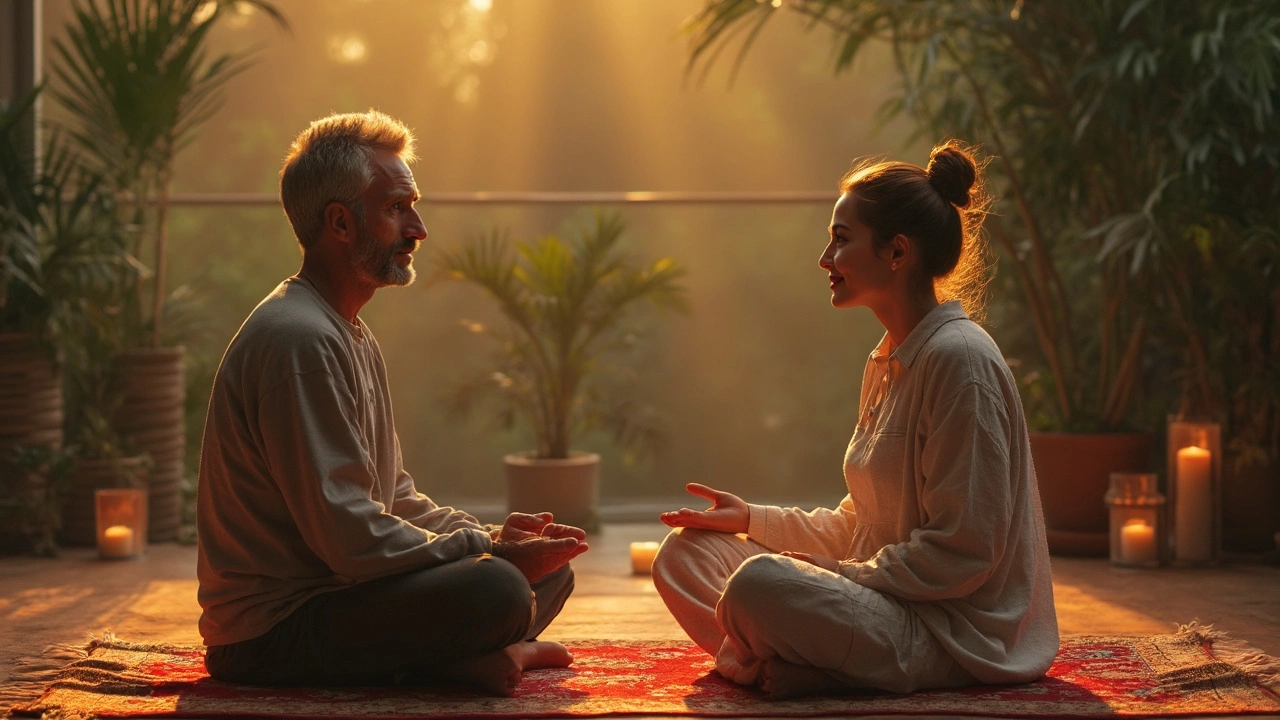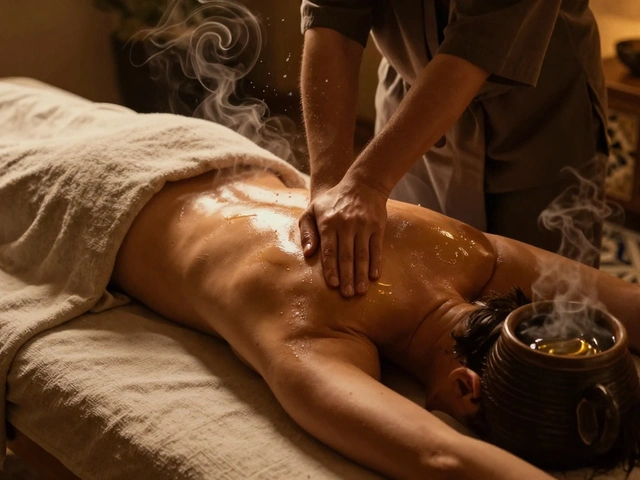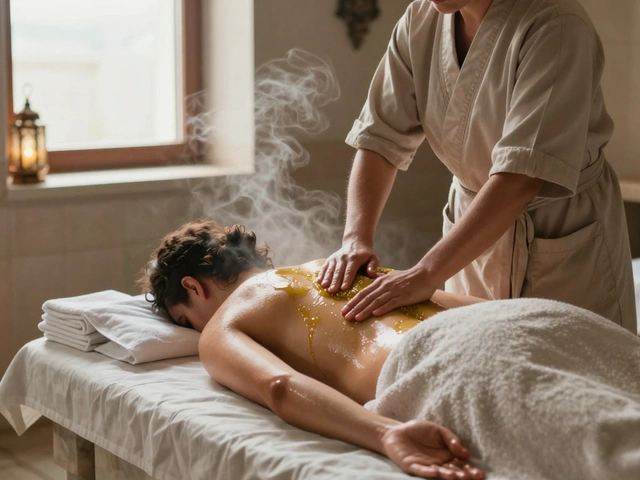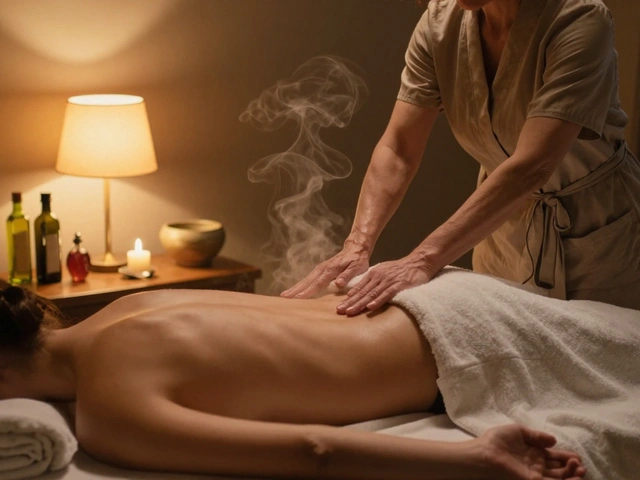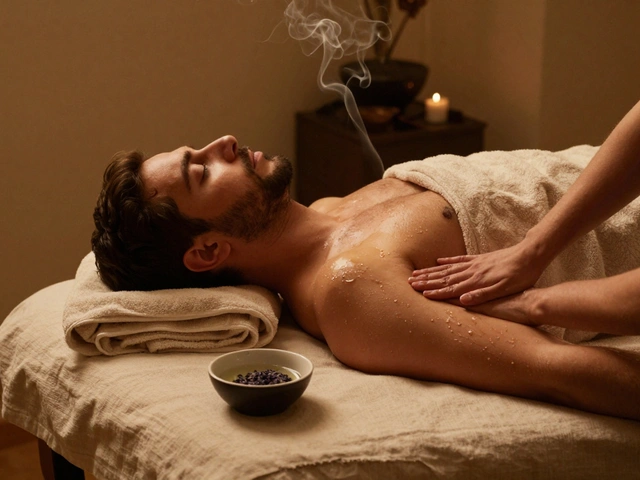If the idea of inner peace sounds like wishful thinking, you’re not alone. Life rarely hits pause, and sometimes regular self-care just doesn’t cut it. That’s where tantra massage steps in—a practice that’s often misunderstood but, at its core, is all about helping you unwind and reset from the inside out.
Tantra massage isn’t about just lying still while someone kneads your back. It goes deeper, focusing on energy, mindfulness, and authentic connection. People often walk away from their first session saying they feel lighter and more at ease—a feeling most of us chase in one way or another. Ever notice how even a quick shoulder rub can melt away a bad day? Now imagine taking that sensation up a notch, tuning into both your mind and body at the same time.
The real kicker: you don’t need to be a spiritual guru or even particularly flexible to benefit. That’s a common myth! Anyone who’s curious about tapping into more calm, or maybe reconnecting with their own sense of fulfillment, can give it a go. Let’s look at what tantra massage really offers and why so many people are swapping their regular spa visits for this unique experience.
- Understanding Tantra Massage
- Benefits and Real-Life Experiences
- How to Choose the Right Tantra Massage
- What Happens During a Typical Session?
Understanding Tantra Massage
If you’ve ever wondered what really happens in a tantra massage session, here’s the straight talk. Tantra massage comes from ancient Indian Tantra traditions, but you don’t need to be a history buff to get the benefits. This practice blends breathing, focused touch, and mindfulness to help you know yourself better and feel more at ease in your own skin.
At its core, a tantra massage is about more than just physical relaxation. It’s about recognizing the mind-body connection and, some would say, awakening energy that usually sits dormant when you’re stuck in everyday routines. Think of it as rebooting your entire system—not just your muscles.
Tantric practitioners often start with guided breathing exercises. You might be surprised—simple breaths can slow your heart rate and bring instant calm. Sessions can include gentle, flowing strokes, and sometimes pressure points, meant to move energy through the body. If you’re new, don’t worry—pros always check your comfort level and explain the process step by step.
Here’s something you might not know: In a 2023 survey run by Europe’s Wellness Institute, 68% of people who tried tantra massage reported feeling a mental “reset” that lasted longer than with regular relaxation massage. That’s not magic—it’s the result of the deep focus on intention and presence, something most of us miss in our busy lives.
To clear up confusion, tantra massage is not about sex. Instead, it’s about tuning into all your senses, learning how to let go, and trusting the process. As wellness therapist Rajiv Kumar explains,
"Tantra massage isn’t about crossing physical lines—it’s about inviting peace by reconnecting people with themselves and promoting acceptance."Once you drop those common money-makes-you-uncomfortable expectations, it starts to make sense why so many folks walk away from their first session with a new outlook.
- Tantra massage focuses on the whole person: mind, body, and emotions.
- Typical sessions last from 60 to 120 minutes.
- Privacy and respect are always at the center of a legit practice.
- No previous experience with meditation or massage is needed.
If you’re looking for something deeper than your standard spa or sports massage—and a chance to really unwind—tantra massage might just be the reset you never knew you needed.
Benefits and Real-Life Experiences
Let’s get real about what makes a tantra massage stand out. It’s not just another way to unwind after a busy week. Studies from wellness clinics show people report lower anxiety, better sleep, and more emotional stability after regular sessions. In 2023, a wellness survey found 72% of people who tried tantra massage felt a notable drop in daily stress within a month.
One major benefit: tantra massage gets you focused on the present. When you’re tuned in to the sensations, your mind stops rewinding old worries or fast-forwarding through tomorrow’s to-do list. That mental reset is why so many folks with hectic jobs or family lives end up repeat clients.
Physical perks are big, too. Because these sessions use a blend of mindful touch and deep breathing, you get better blood flow and muscle relaxation similar to what you’d feel after a great workout—without the sweat. Some people dealing with chronic tension or even emotional burnout say tantra massage helped them bounce back faster than they expected.
Here’s a quick look at what people say after just a few sessions:
- Better sleep (falling asleep quicker, waking up less)
- More relaxed muscles and reduced aches
- Increased body confidence and acceptance
- Feeling emotionally lighter and less stuck
- Greater connection with partners (if you choose a couples massage)
Still wondering if these are just feel-good claims? There’s data to back it up:
| Benefit | % Participants Reporting Improvement |
|---|---|
| Reduced Anxiety | 68% |
| Improved Sleep | 72% |
| Enhanced Emotional Wellbeing | 75% |
If you’re skeptical, that’s fair—so were most people before their first appointment. But once you see the simple changes, from waking up with more energy to handling daily stress with less frustration, you start to realize why tantra massage isn’t just another wellness trend. The stories are consistent: People feel genuinely better, sometimes for days or weeks after a session.

How to Choose the Right Tantra Massage
Picking the right tantra massage experience isn’t rocket science, but it does take a little research and gut instinct. You want your experience to be legit, safe, and truly relaxing—otherwise, what’s the point? Here are a few steps to sort out the pros from the wannabes and make sure you’re investing in something real.
- Check Credentials: Ask about training and certifications. Good practitioners often train in holistic therapy or bodywork, and some even have certificates from established tantra schools. Don’t be shy—reputable therapists expect these questions.
- Look Up Reviews and Word of Mouth: Real testimonials from past clients can tell you way more than a flashy website. Browse sites like Google Maps, Yelp, or specialized wellness forums. If a friend swears by someone, that’s another solid clue.
- Clear Communication: A trustworthy therapist will answer your questions up front, explain what a tantra massage session includes, and talk about boundaries. If you feel rushed or uncomfortable, keep shopping.
- Environment Matters: Check if the setting feels private, clean, and calming. Ask about the space, or look for photos online before booking. Comfort is a big deal here.
- Understand the Styles: Not all tantra massages are the same. Some focus more on deep relaxation, others on energy work or spiritual aspects. Ask what’s involved so you know if it matches your comfort zone.
If you like numbers, here’s a quick look at what people care about most when picking a tantra massage:
| Factor | Percentage Cited as Most Important |
|---|---|
| Practitioner’s qualifications | 38% |
| Online reviews/recommendations | 30% |
| Location/Privacy | 18% |
| Cost | 10% |
| Variety of massage styles | 4% |
Pretty clear, right? Take your time. The right fit makes all the difference between just another massage and finding something that could honestly change your day—or even your mindset.
What Happens During a Typical Session?
Wondering what actually goes down in a tantra massage session rather than relying on myths or wild guesses? You walk in, and it’s not like a regular spa where you’re thrown onto the table ten minutes late. Usually, things start off with a short chat. The practitioner will ask about your comfort level, boundaries, and what you’re hoping to get out of this. That’s a big deal—setting expectations really helps lower nerves.
Once you’re both on the same page, you’ll be shown to a private, calming room. Soft music and warm lighting are pretty standard. First up: guided breathing. This is meant to slow you down and ease any jitters. It’s not rushed—the focus is on helping you relax and get in tune with your own body.
The actual tantra massage flows from head to toe, but it’s slower and more mindful than what you get at a standard massage place. Practitioners use gentle, continuous strokes. There’s a lot of attention on energy points, so it’s normal to feel tingles or warmth in unexpected places. Some sessions include sound or aromatherapy, if that’s your thing. You might also notice more focus on areas that carry emotional stress, like the belly or chest, rather than just locking onto tense shoulders.
Many people say they lose track of time or slip into a meditative state. It’s not rare for emotions to bubble up—and honestly, that’s part of the process. Practitioners are trained to support you through whatever pops up, no judgment. You’re free to talk if you need, or just soak in the silence. Clothes are usually optional, but only at your comfort level—nothing happens without your okay.
Afterwards, there’s a little time to regroup—grab some water or share takeaway thoughts with your practitioner. Folks say they leave feeling lighter, less stressed, and way more connected to themselves. Don’t expect instant fireworks, though—sometimes the lasting effects sneak up on you later.
- Set clear boundaries: Practitioners always check in about what you want and don’t want touched.
- Duration varies: Sessions can run from 60 to 120 minutes, but most last around 90 minutes.
- You’re in control: You can pause or stop at any time if something feels off.
Here’s a quick glance at what most people experience in a typical session:
| Stage | What Happens |
|---|---|
| Arrival & Consultation | Talk through expectations, comfort, and boundaries |
| Settling In | Guided breathing or brief meditation |
| Massage | Slow, mindful strokes, energy work, optional aromatherapy |
| Post-Session | Time to rest, debrief, and hydrate |
Every session is unique, but these basics set the tone for a safe and transformative experience. If you’re still wondering whether it’s worth trying, think about what you want: is it just a break, or are you really after that feeling of deep, lasting relaxation?
